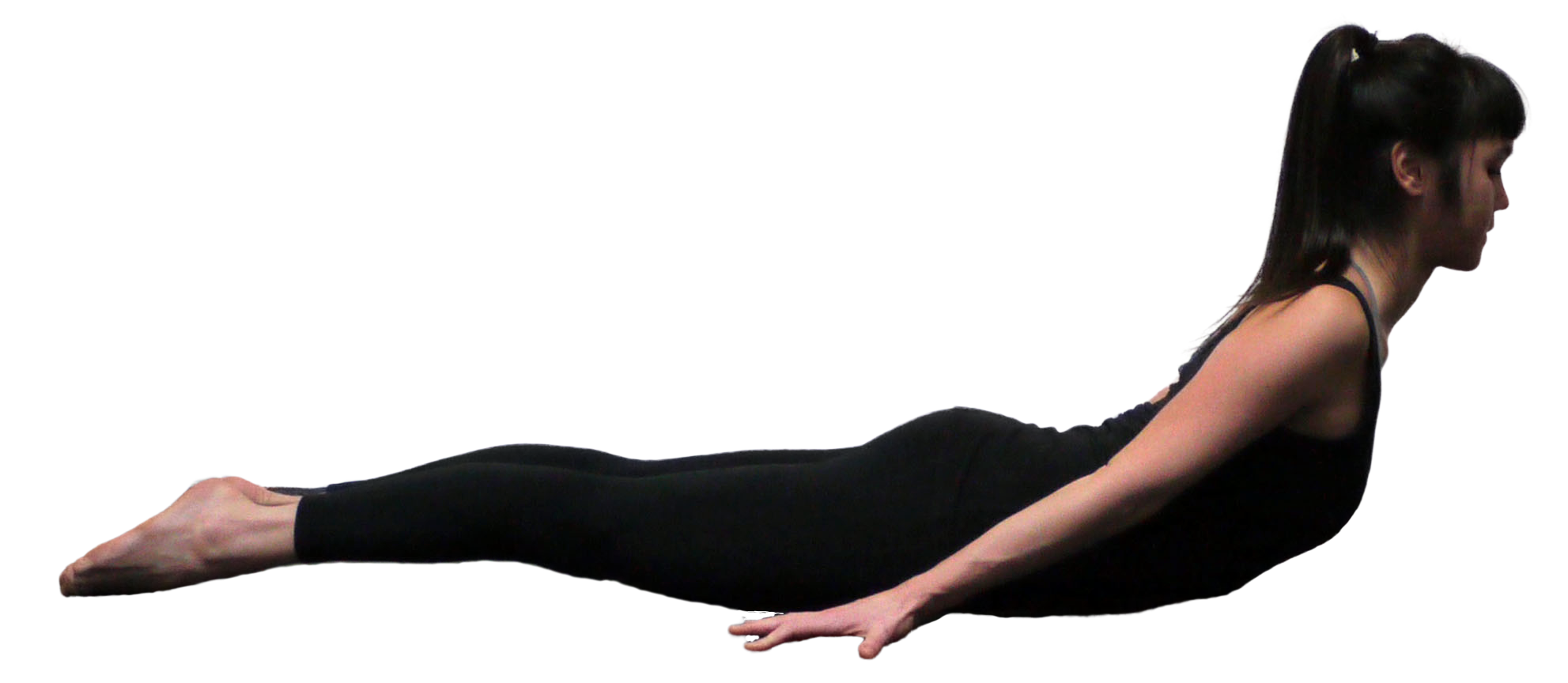How to strengthen the right muscles to prevent shoulder and neck injuries in yoga practice.
THE BALANCE BETWEEN THE MUSCLES THAT PULL THE SHOULDERS UP AND THE MUSCLES THAT PULL THE SHOULDERS DOWN
If we look at the muscles that move the shoulder girdle (the scapula and the clavicle) there are 6 muscles that pull them in various directions. This enables us to slide our scapula on the ribcage, which then allows us to move our arms in all directions.
We can simplify these 6 muscles and think of 3 main directions: upwards, around and downwards. In order to have good balance in the muscles that move our shoulders and arms, we need to be capable of moving the scapula easily in these 3 directions. In this article we will focus on the UP versus DOWN.
The muscles that lift the shoulder girdle up towards the neck: rhomboids major and minor, levator scapulae.
The upper trapezius muscles also lift the shoulder girdle upwards toward the neck and head.
The muscles that pull the shoulder girdle downwards: serratus anterior, lower trapezius, pectoralis minor and subclavius.
Modern life with computers, and also frequent driving, requires that we overuse these UPPER shoulder girdle muscles. Stress, also tends to make us lift our shoulders upwards.
The muscles that pull the scapulae and clavicles DOWN are also considered to be the stabilisers of the shoulder girdle. They enable us to carry or bear heavier loads without injury. If they are not strong enough we will overuse the smaller UPPER muscles when we use our arms or carry heavier weights. This includes many of the inversions in yoga where we are required to carry the weight of our body on our arms and shoulders.
When the UPPER muscles (which are smaller) are overused, they become tight and irritated, and potentially injured. If the levator scapulae, which attach to the side of the neck, become tight they can pull the neck out of alignment and cause even more problems. When the upper trapezius muscles become tight they can pull the back of the skull downwards causing a head forward posture and increasing the possibility of headaches.
HOW THESE MUSCLES AFFECT YOGA POSTURES
To explain it another way, many people come to yoga with an imbalance in their shoulder girdle muscles; short and tight UPPER muscles (due to work and stress) and weak LOWER muscles (due to lack of conditioning). If they practice postures which require a lot of strength in the LOWER muscles they will often become injured or make their current conditions worse.
An example of this is Chaturanga dandasana; it requires strength in the serratus anterior and lower trapezius muscles that many people simply don’t have when they are new to yoga. Practising this posture repeatedly (as people do in vinyasa) without adequate support from the lower muscles, leads to overuse of all of the upper muscles causing tightness, headaches and potentially creates a head forward posture. The imbalance that results can sometimes lead to overuse problems such as biceps tendinitis (which will be felt as a soreness at the top of your bicep muscle at the front of your shoulder when you do Chaturanga dandasana). This is why I recommend plank as a substitute posture for Chaturanga dandasana until people have built up adequate strength.
Practising Chaturanga dandasana repeatedly without sufficient strength in the serratus anterior and lower trapezius can lead to shoulder injuries and neck tightness.
Build strength first in Plank before attempting Chaturanga dandasana. If you can’t hold a full plank like this and slowly press down without your shoulders riding up or head dipping forward you shouldn’t be practising the full Chaturanga dandasana.
Inversions such as headstand, forearm balance and handstand all require strength in these lower muscles (serratus anterior and lower trapezius) to keep the scapulae anchored firmly to the ribcage. Trying these postures before you have adequately prepared and developed sufficient strength can cause strain and injury.
Sirsasana requires the ability to stabilise the shoulder girdle
Pinca mayurasana
Handstand
WHICH POSTURES CAN WE USE TO STRENGTHEN?
In general we can think of drawing the scapulae (shoulderblades) and the clavicles (collarbones) down in many postures - rather than letting them ride up towards the head. Often, teachers tell students to relax their shoulders down. This may not be enough. If your shoulder are obviously lifting, it is probably better to actively draw the shoulderblades and collarbones downwards, feeling the muscles activating to do that. This is a good focus in the standing postures or Surya namaskar - working on actively keeping the shoulder girdle down whilst moving in and out of the postures.
Some specific postures which will target and strengthen these LOWER muscles are:
The action of pushing the arms into the floor and pulling the ribcage up away from the floor will strengthen the serratus anterior.
The same action can be done in Bakasana.
…and again in Plank
Actively draw the scapulae and clavicles down in Dandasana. You may need to find the right place for your hands depending on the length of your arms.
This variation of Bhujangasana strengthens the lower trapezius.
So does this posture.
If you make sure you keep your shoulderblades down as you rotate, this posture is very effective at strengthening the lower trapezius.
In our yoga practice, we have an opportunity to correct this imbalance of the UPPER and LOWER shoulder girdle muscles by consciously choosing to strengthen the LOWER muscles (it’s important to remember that not everyone has this imbalance - some people are very strong in the LOWER muscles).
If you do have this imbalance, correcting it over time can make you less prone to headaches, neck and shoulder injuries and muscle stiffness (and may make some of the more challenging postures more accessible to you).
written by Jean Campbell
Interested in learning more about how anatomy relates to yoga practice?
Have a look at my Online Dynamic Yoga Anatomy Course.















